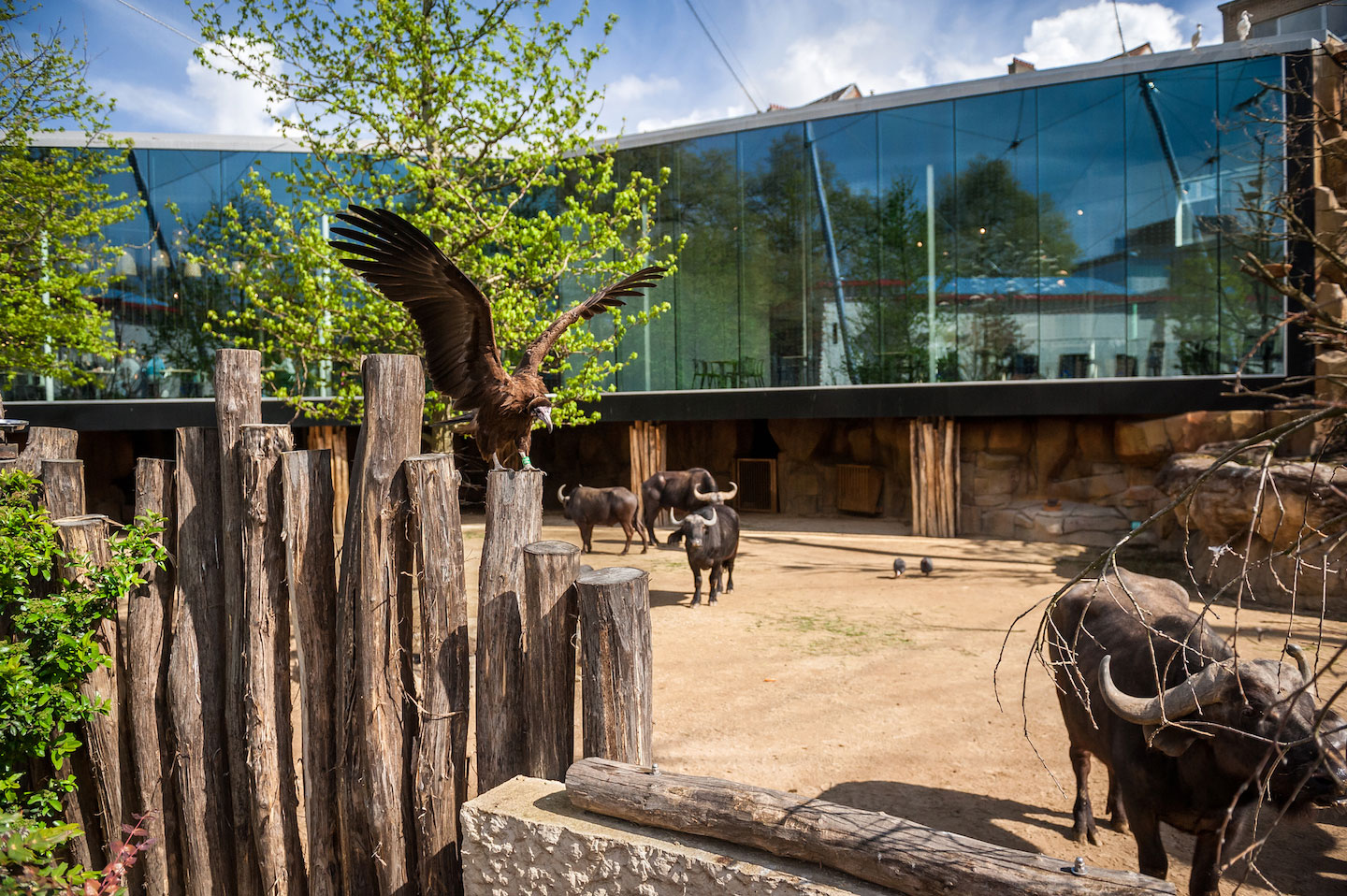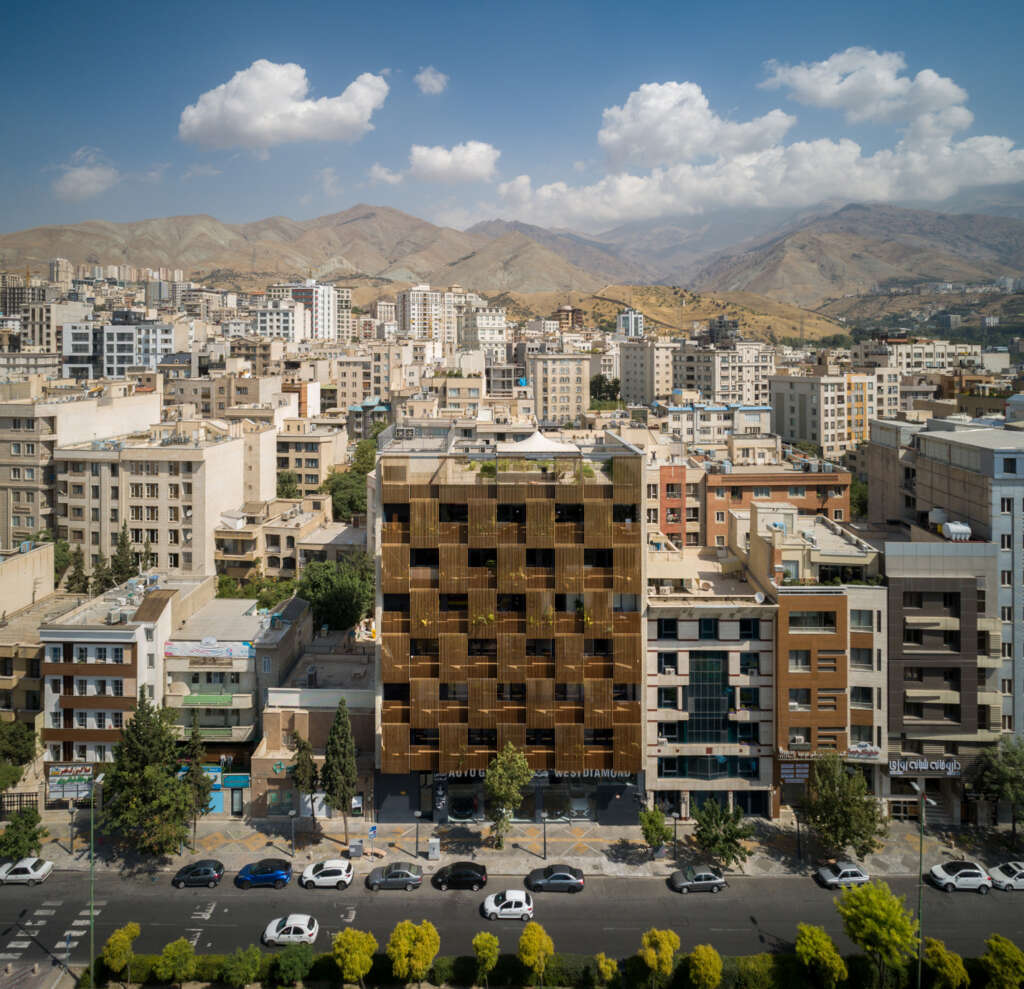
Adisaptagram Society Hall
Architect: Tamouz Architecture & Construction Group
Location: Tehran, Iran
Type: Office
Year: 2024
Photographs: Mohammad Hassan Ettefagh
Disorder/Order – Scattered/Arranged – Unorganized/Organized – Not seeing/Seeing – Unseen/Seen – Shade/Light – Closed/Open – Shell/Space
The following description is courtesy of the architects. These opposing concepts were central to the design challenges faced by the Sarv administrative building project. Initially referred to the design team in June 2017 for façade approval, the building posed unique architectural problems. It was a partially constructed structure with 100% plot coverage, limiting the potential for natural light and ventilation to just one side—the southern façade. This constraint heavily influenced the design team’s approach, as they sought to balance functional requirements with aesthetic and spatial considerations.

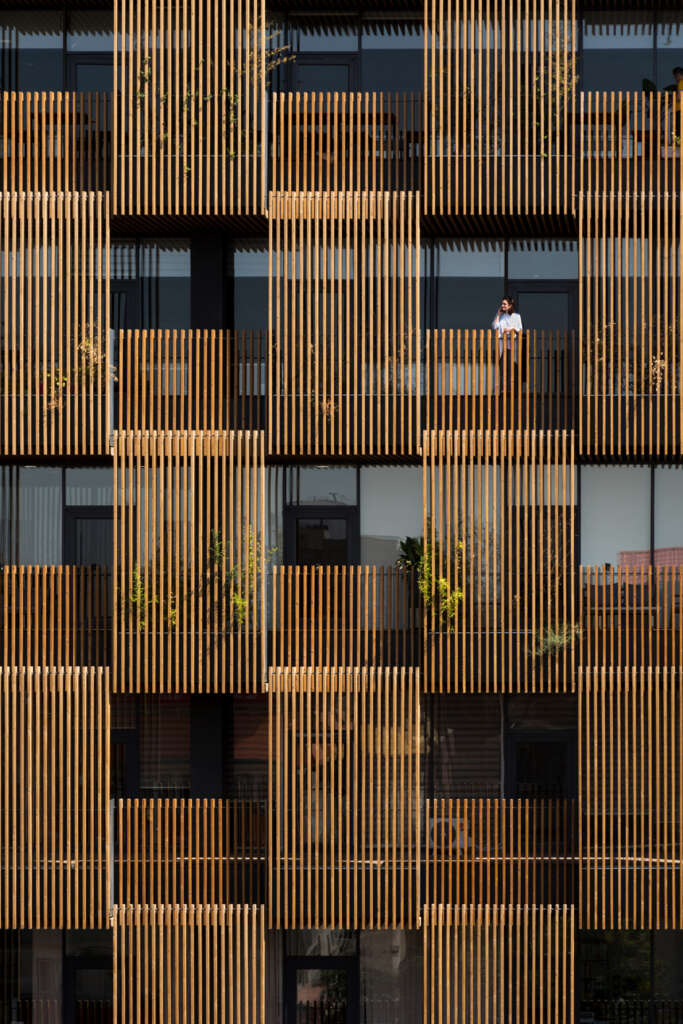
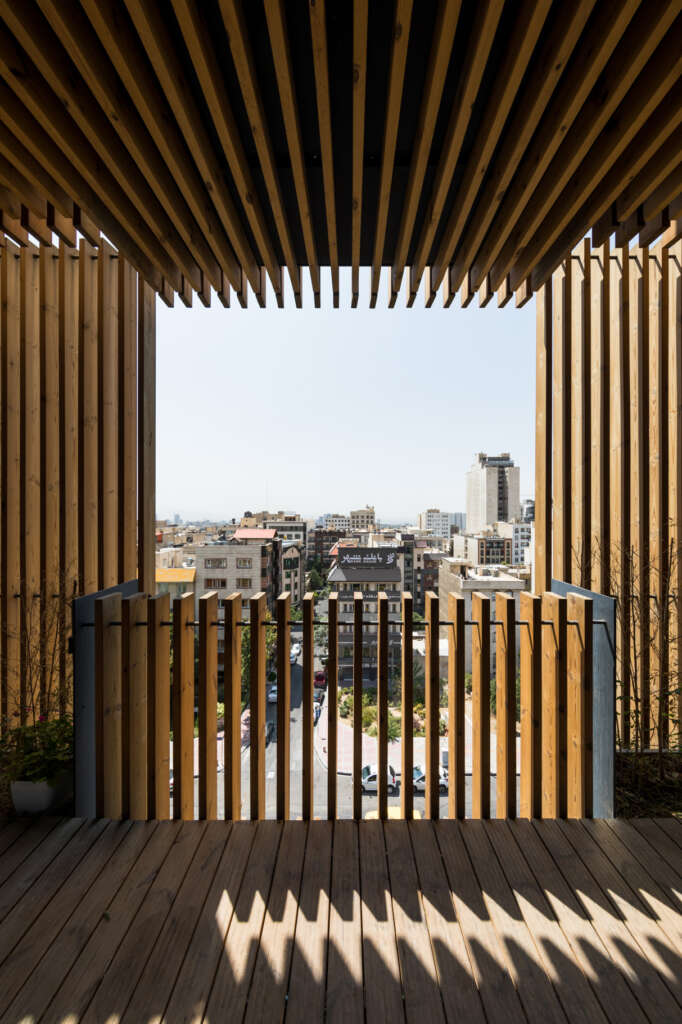
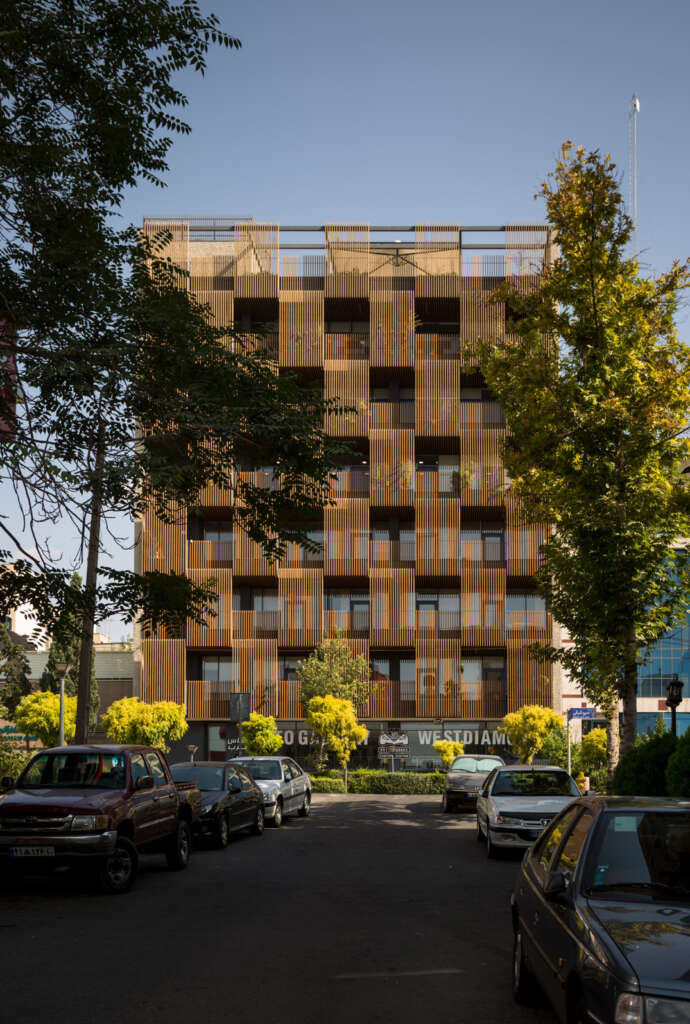
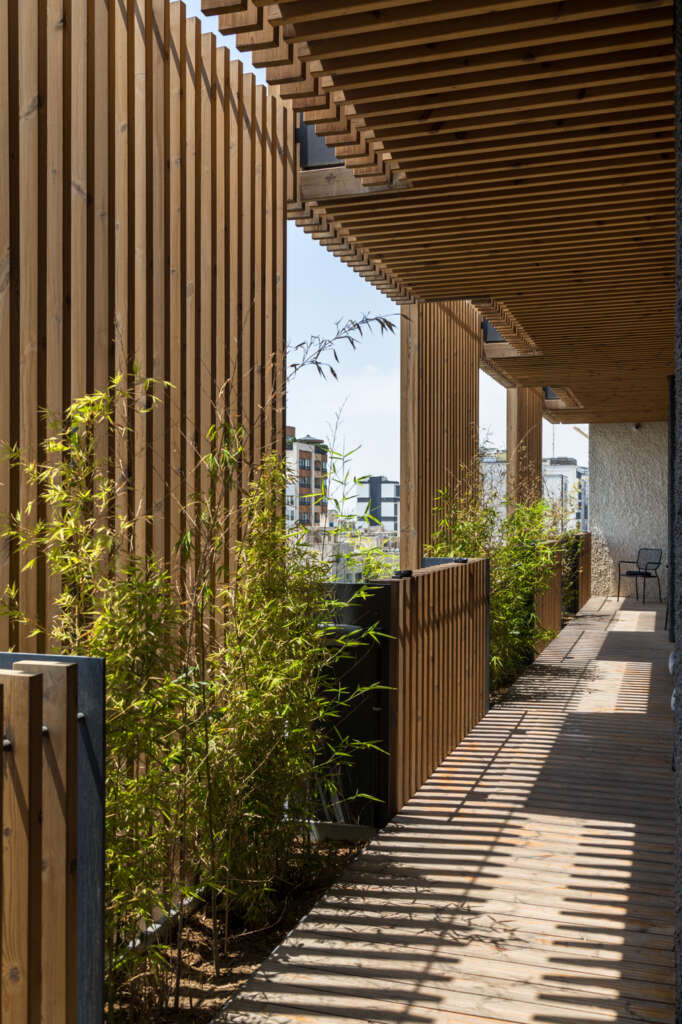
Given the building’s initial form, it became clear that the façade needed more depth. A simple, flat surface would not suffice. Instead, the façade had to evolve from a mere protective “shell” into an intermediate space that not only framed the building but actively engaged with its surroundings. The southern side presented a complex challenge: it needed to be semi-open, allowing natural light to penetrate deep into the interior while shielding the space from harsh, direct sunlight. Moreover, it had to strike a balance
between openness and privacy—transparent enough to connect the building with the outside world, yet closed enough to provide a sense of enclosure and security. This duality was key: a space that could “see” the outside but remain “unseen” from within, creating a dynamic interaction between the interior and exterior.
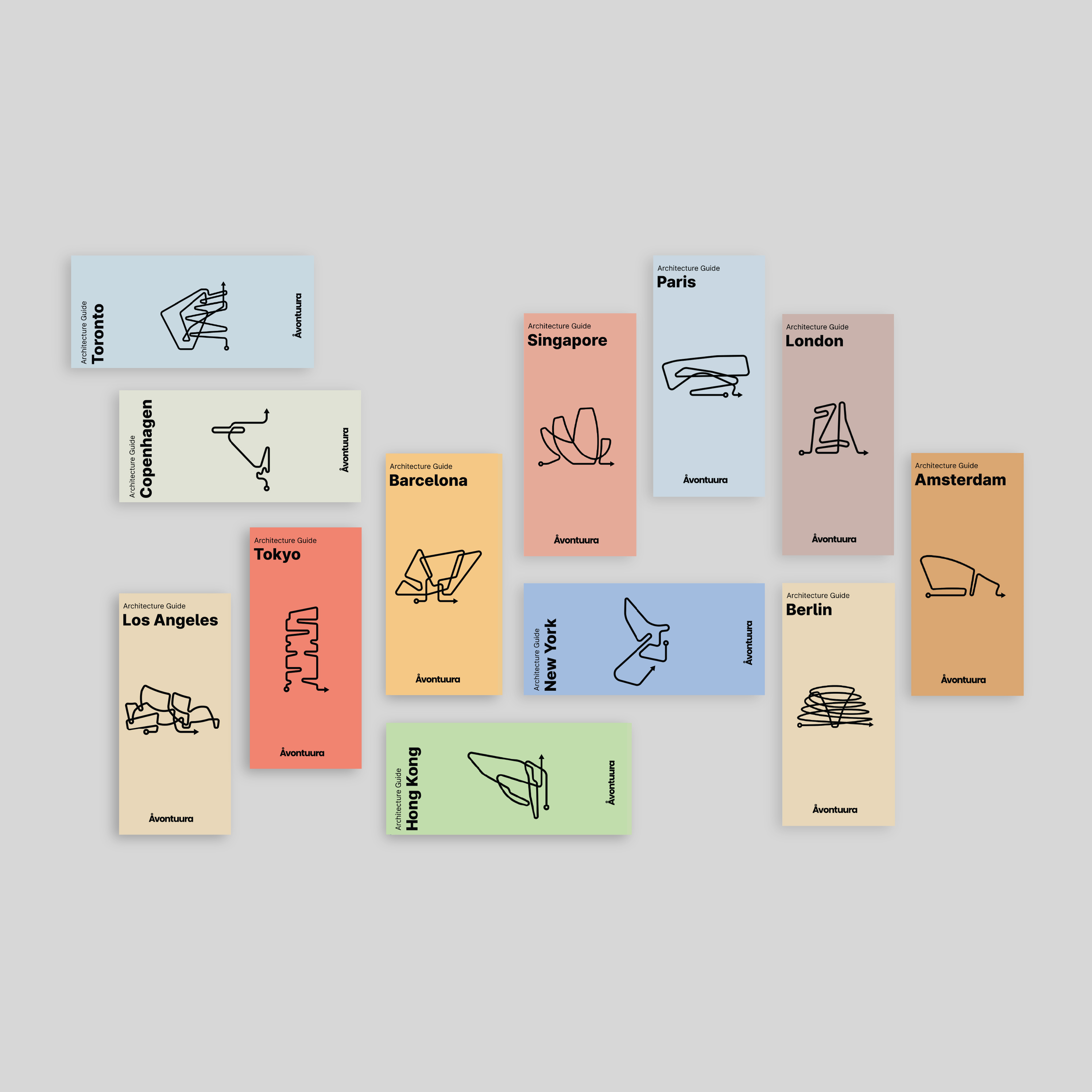
Introducing the Wandering Series:
Architecture Guides for Architecture Lovers
Explore all our guides at avontuura.com/shop
To achieve this, the boundary between the building and the city was defined by two distinct layers. The first, closer to the interior, consisted of large, transparent windows that allowed natural light to flood the space, enhancing visibility and openness. The second, external layer was semi-transparent, composed of wooden railings and steel planters, forming a permeable screen. This outer layer acted as a filter, regulating light and airflow while providing a sense of privacy for the occupants. The space between these two layers became an active zone—partially open, serving both functional and aesthetic purposes, and softening the transition between the building and its urban environment.
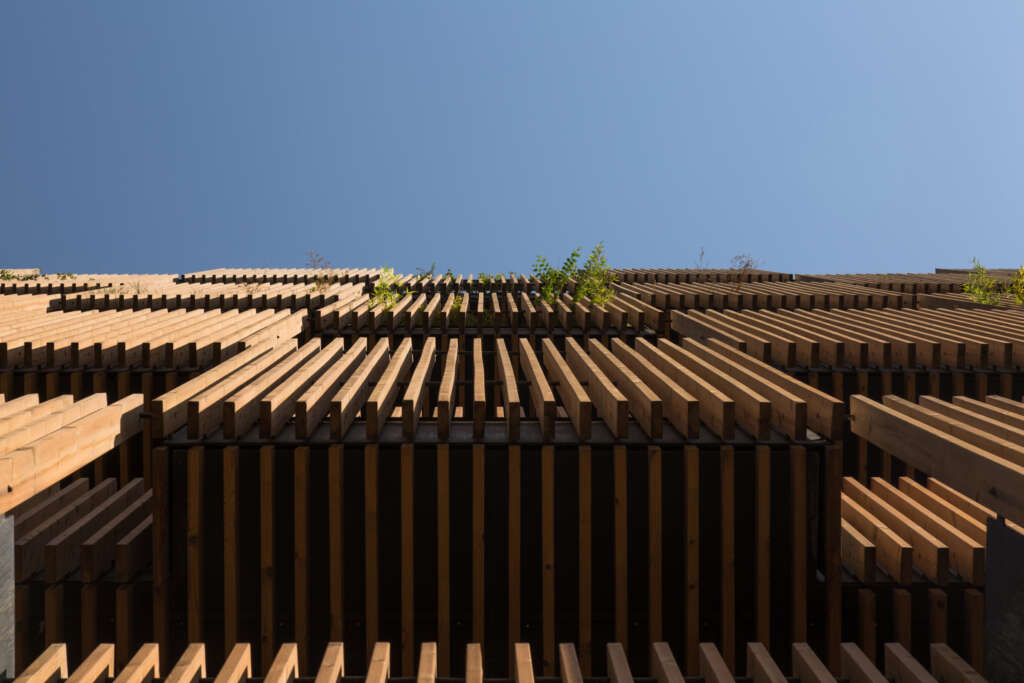
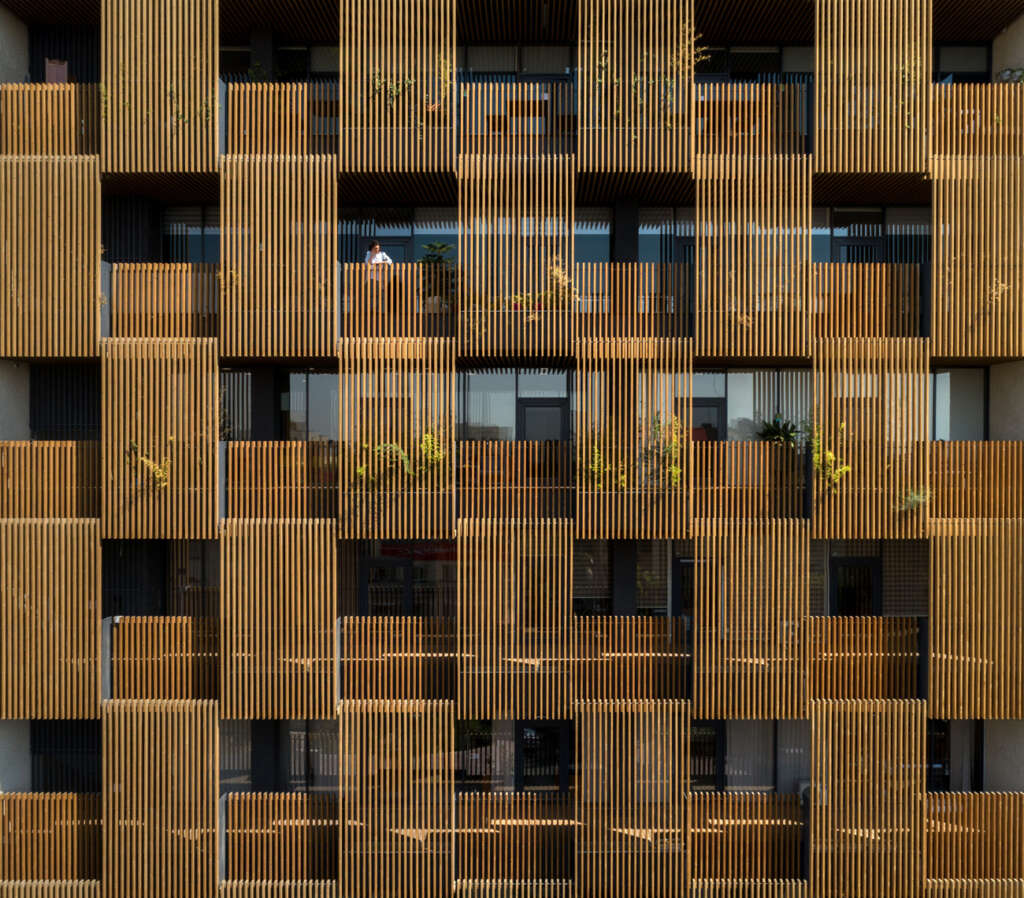
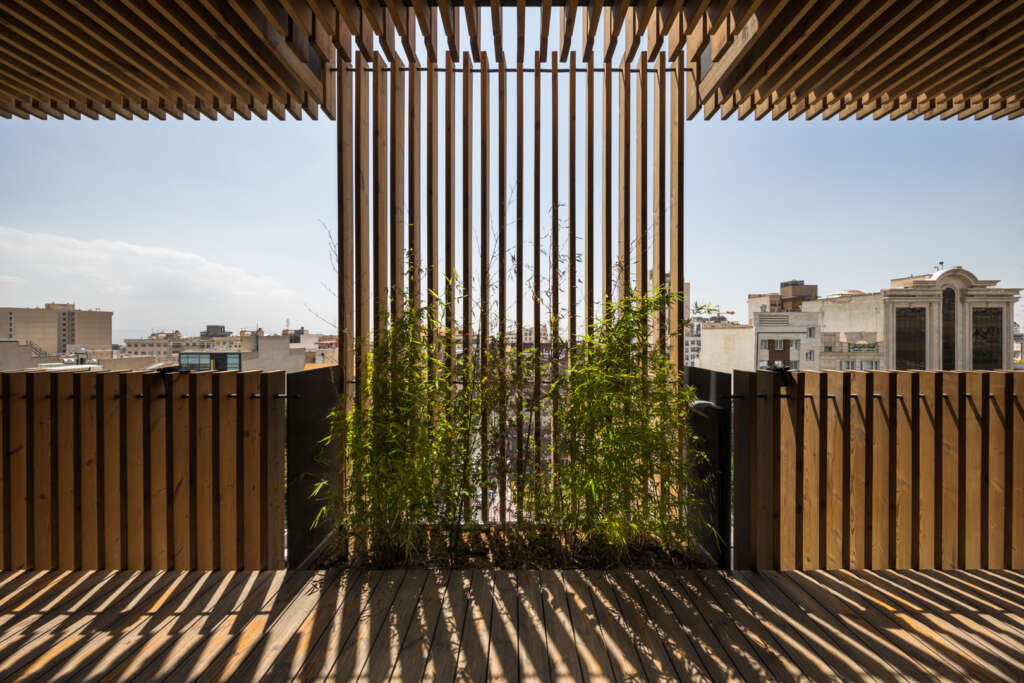

This design language was extended to the rooftop, continuing the concept of layered transparency and semi-transparency. The rooftop was not merely a functional space but an integral part of the building’s interaction with the city, offering views, light, and air while maintaining a degree of seclusion.
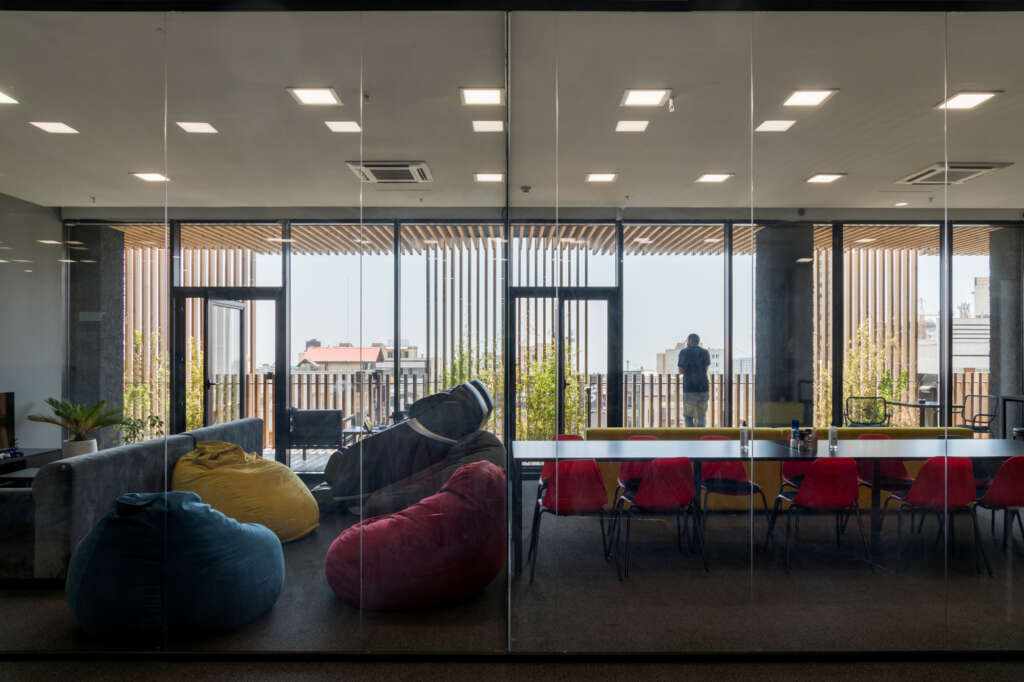
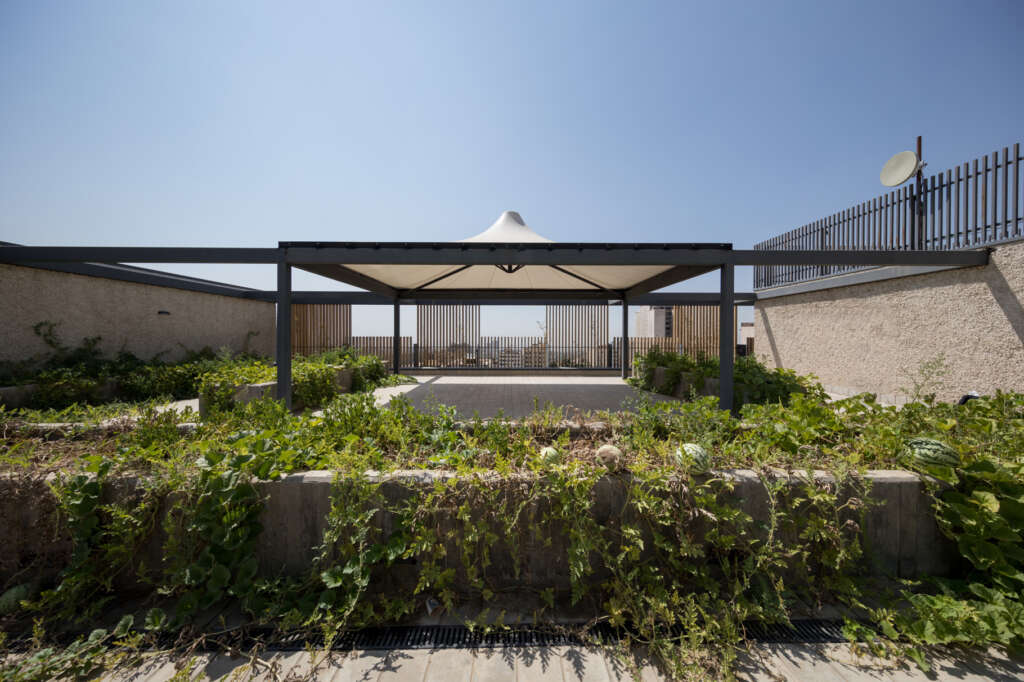
The careful organization of the façade and rooftop extended into the building’s interior design. The arrangement of service zones, common areas, and mechanical and electrical systems followed the same principles of layering, openness, and controlled interaction with the environment. Each element was deliberately integrated to create a cohesive whole—an architectural response that balanced contrasts and reconciled opposing forces within a unified design.
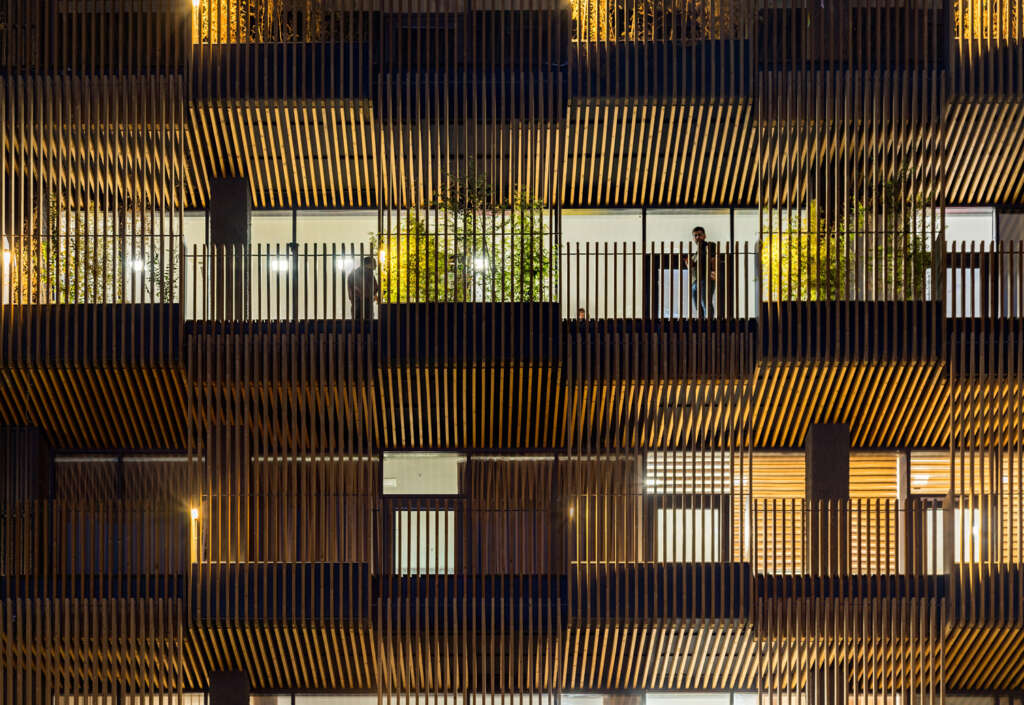

Project Details
- Architecture Firm: Tamouz Architecture & Construction Group
- Lead Architects: Hooman Tahamtanzadeh, Marjan Banaei, Hossein Salavaty Khoshghalb
- Client: Reza Rajabi
- Archiectural Design Colleague: Babak Abdolghaffari
- Construction: Alcam Vista
- Supervision: Tamouz Studio
- Structure: Alcam Vista
- Electrical and Mechanical: Tamouz Studio
- Graphic: Hadi koohihabibi, Pariya Shahbazi
- Photography: Mohammad Hassan Ettefagh
- Total built area: 4420 m 2
- Area: 400 m 2
- Location: Iran, Tehran

